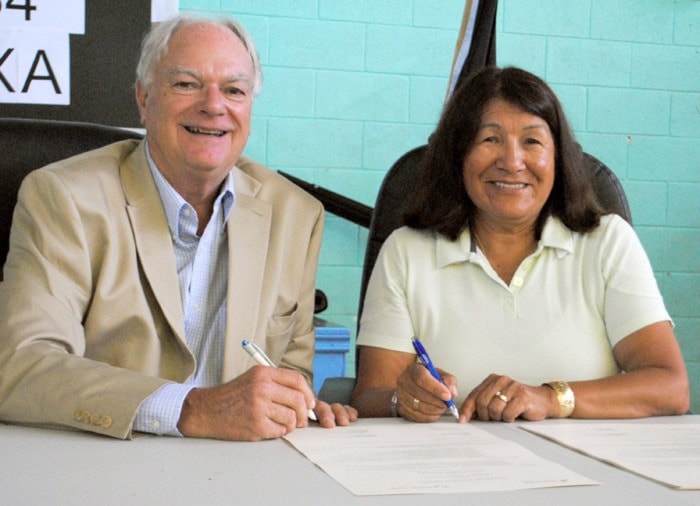Last week’s Ktunaxa Nation annual general assembly included the renewal of an agreement designed to improve health outcomes for First Nations people in the East Kootenay.
Ktunaxa Nation chair Kathryn Teneese and Interior Health Authority board chair Norman Embree re-signed a letter of understanding (LOU) at Lower Kootenay on July 25.
“The long term health of the Aboriginal population within the Ktunaxa’s Traditional Territory is a priority,” said Teneese. “By working with Interior Health, we are increasing the understanding of health and cultural needs and how best to meet them either in a clinical or community environment.”
Since the original signing of the LOU in 2009, the partnership has led to a number of initiatives, including:
•urban services — Street Angel Project in Cranbrook. This program provides street and at risk people, both Aboriginal and non-Aboriginal, with a place to meet, connect and receive services such as health care;
•establishment of an Aboriginal space at East Kootenay Regional Hospital, and Aboriginal self-identification project at IHA facilities. Aboriginal peoples who self identify are offered the services of an Aboriginal patient navigator and/or Aboriginal patient liaison who provides them with culturally sensitive assistance. The Aboriginal patient navigator supports Aboriginal patients, caregivers, and their families during a hospital stay, and the Aboriginal patient liaison works with Aboriginal clients to access community services;
•direct mental health service delivery — the creation and implementation of programs combining traditional practices with therapeutic and clinical methods;
•youth collaboration and planning — through the Street Angel program, the need for youth programs was identified due to the significant number of at-risk youth in Cranbrook. Five projects have been implemented; and
•physician and nurse visits to communities allow Ktunaxa people to receive health care services on reserve in a culturally appropriate and sensitive manner.
“Agreements, like the letter of understanding with the Ktunaxa Nation, are important for Interior Health,” said Embree. “By continuing to work collaboratively with the Ktunaxa, and other First Nations and Aboriginal groups, we are increasing our ability to meet health needs, improve access and increase Aboriginal involvement in health service decisions.”
The new letter of understanding is in perpetuity with reviews scheduled every five years. The LOU encompasses health services for all Aboriginal peoples, including Métis and Inuit, who live within the Ktunaxa traditional territory.
The Ktunaxa Nation council is made up of the communities of St. Mary’s, Lower Kootenay, Akisqnuk and Tobacco Plains.
